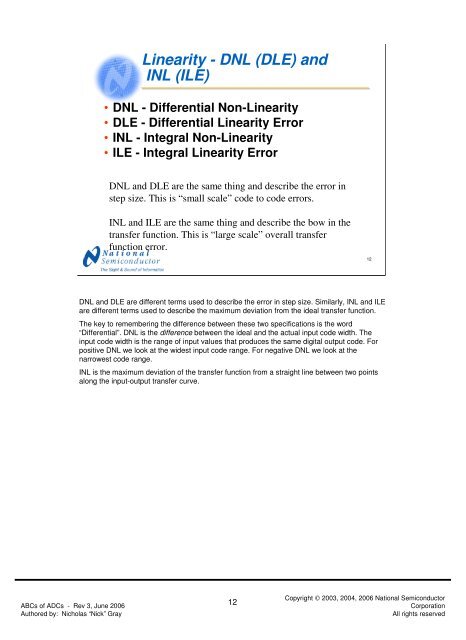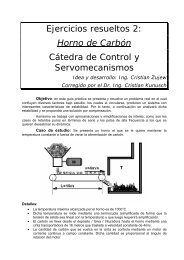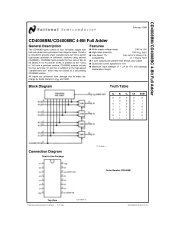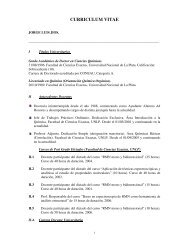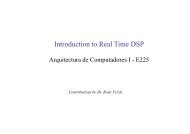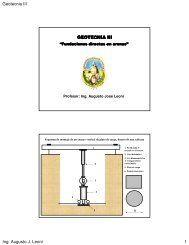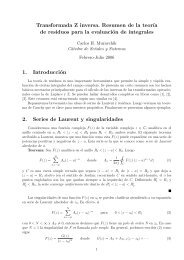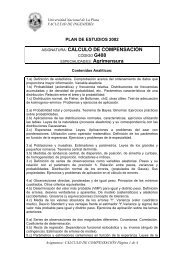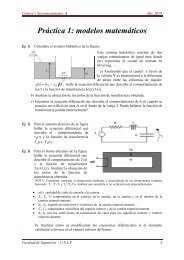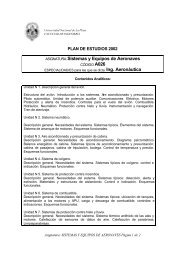ABCs of ADCs - Analog-to-Digital Converter Basics (PDF)
ABCs of ADCs - Analog-to-Digital Converter Basics (PDF)
ABCs of ADCs - Analog-to-Digital Converter Basics (PDF)
Create successful ePaper yourself
Turn your PDF publications into a flip-book with our unique Google optimized e-Paper software.
Linearity - DNL (DLE) andINL (ILE)• DNL - Differential Non-Linearity• DLE - Differential Linearity Error• INL - Integral Non-Linearity• ILE - Integral Linearity ErrorDNL and DLE are the same thing and describe the error instep size. This is “small scale” code <strong>to</strong> code errors.INL and ILE are the same thing and describe the bow in thetransfer function. This is “large scale” overall transferfunction error.12DNL and DLE are different terms used <strong>to</strong> describe the error in step size. Similarly, INL and ILEare different terms used <strong>to</strong> describe the maximum deviation from the ideal transfer function.The key <strong>to</strong> remembering the difference between these two specifications is the word“Differential”. DNL is the difference between the ideal and the actual input code width. Theinput code width is the range <strong>of</strong> input values that produces the same digital output code. Forpositive DNL we look at the widest input code range. For negative DNL we look at thenarrowest code range.INL is the maximum deviation <strong>of</strong> the transfer function from a straight line between two pointsalong the input-output transfer curve.<strong>ABCs</strong> <strong>of</strong> <strong>ADCs</strong> - Rev 3, June 2006Authored by: Nicholas “Nick” Gray12Copyright © 2003, 2004, 2006 National Semiconduc<strong>to</strong>rCorporationAll rights reserved


